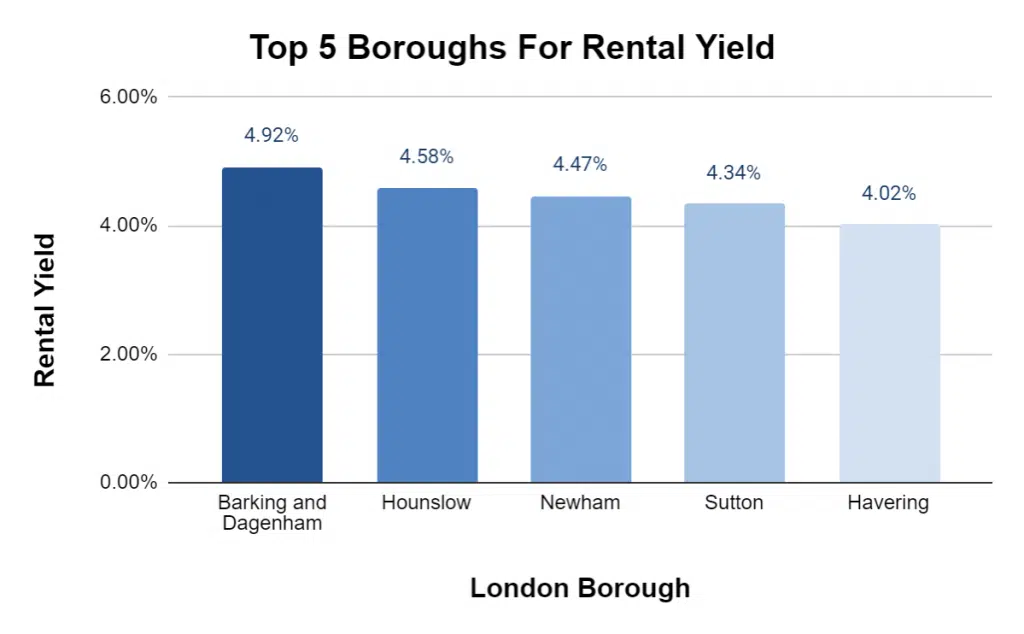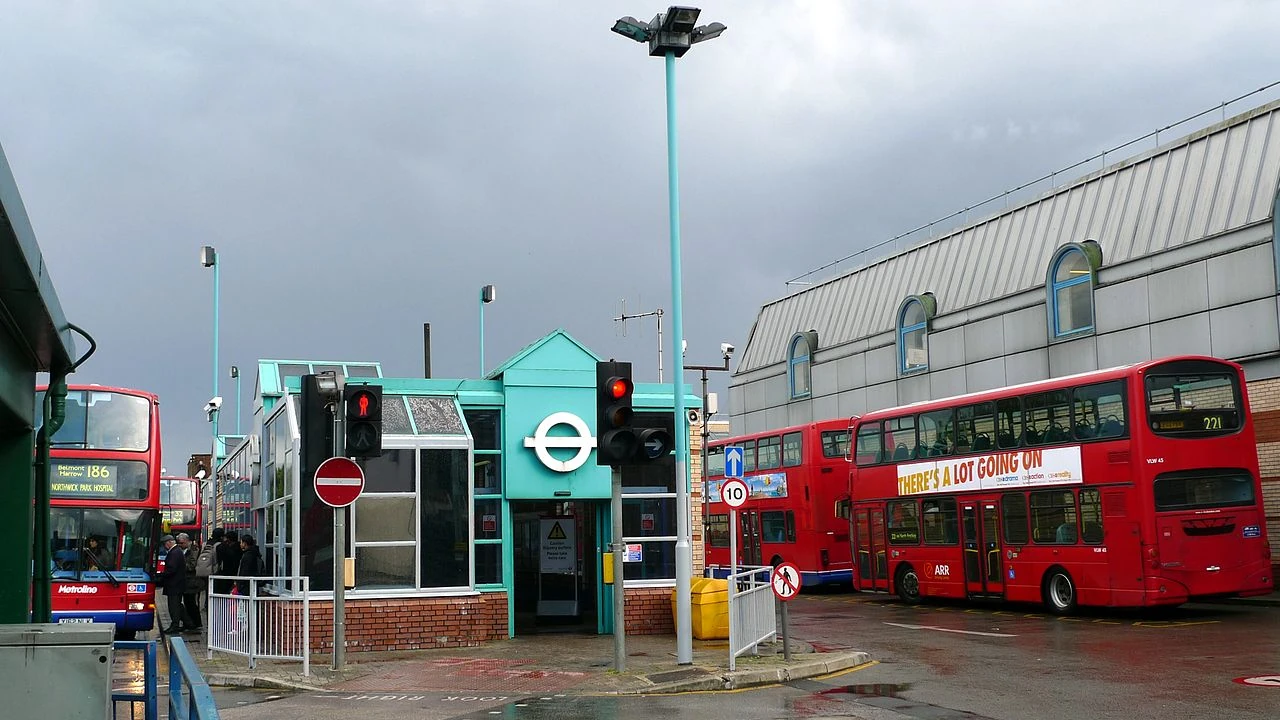The rental market in London has long been one of the most sought-after in the world, known for its complexity, diversity, and high demand. Whether you’re a tenant looking for the perfect place to live or a landlord seeking to rent out your property, understanding the nuances of this market is essential. If you’re a recent graduate, this guide to figuring out where to live in London can help you make informed decisions. This guide will help you navigate London’s rental landscape, highlighting key trends for 2024, explaining factors that influence pricing, and providing crucial advice for both tenants and landlords.
Overview of the London Rental Market in 2024
The rental market in London is constantly evolving, influenced by a range of economic, social, and political factors. As we enter 2024, the market faces new dynamics shaped by the post-pandemic recovery, shifting housing preferences, and economic uncertainty. While rental demand remains high, the market itself is facing several challenges, including inflation and changes in tenant behavior.
Key Factors Influencing London’s Rental Market
Several factors are currently driving London’s rental market. One of the most significant is inflation, which has caused rent prices to rise, particularly in central areas where demand remains strong. As inflation pushes up the cost of living, tenants are seeking properties that offer better value for money, often opting for more affordable locations in outer boroughs.
Additionally, interest rates play a critical role. With rising interest rates, fewer individuals can afford to buy property, pushing them into the rental market. This has led to increased competition for rental homes, driving up prices further, especially in popular areas close to the city center.
Remote work has also had a lasting impact on the market. Many professionals, no longer tied to daily commutes, are choosing to rent in more spacious homes further from central London, particularly in boroughs with good transport links. This has created a shift in demand from inner-city apartments to suburban houses.
Lastly, population growth and immigration continue to fuel the market, with international students, professionals, and expats driving demand in areas with excellent transport and amenities.


In addition to the key factors driving London’s rental market, one crucial tip for prospective tenants is to broaden their search beyond traditionally popular areas. Emerging neighborhoods, particularly those undergoing redevelopment or benefiting from new infrastructure projects, can offer more competitive rental prices and potential for value appreciation. Boroughs like Barking and Dagenham, for instance, are becoming attractive due to their improving amenities and transport links. Keeping an eye on future developments can provide tenants with a chance to secure more affordable housing in locations set to grow in popularity.
Current Rental Trends in Different London Boroughs
Rental trends vary significantly across London, with each borough exhibiting distinct characteristics. In central London, particularly in boroughs like Kensington and Chelsea, demand for premium properties remains robust, with high-net-worth individuals seeking luxury flats and houses in prestigious areas. Rents here are among the highest in the city, reflecting both the desirability of the location and the limited supply of available homes.
On the other hand, outer boroughs like Lewisham, Barking, and Dagenham are experiencing increased interest due to their more affordable rents and improving transport infrastructure. These areas, which offer greater space at a lower cost, have become particularly attractive to families and professionals who are willing to commute longer distances in exchange for larger homes or access to green spaces.

The Impact of the Post-Pandemic Economy on London’s Rentals
The effects of the pandemic are still being felt in the London rental market. During the height of the pandemic, there was a sharp decrease in demand for central London properties as many professionals moved to more rural areas or returned to their home countries. Now, as we move further into recovery, demand is returning, but with a noticeable shift.
Hybrid working models mean that professionals no longer need to be in the office every day, and as a result, rental demand is shifting from central locations to more affordable, spacious properties further out. This trend is particularly evident in boroughs like Croydon and Greenwich, where tenants are seeking homes with more living space, outdoor areas, and proximity to good schools.
Types of Rental Properties in London
London offers a diverse range of rental properties to suit various needs, preferences, and budgets. From sleek city apartments to large suburban houses, there’s something for everyone in this dynamic market.
Apartments and Flats: The Most Popular Rental Option
Apartments, or flats as they are commonly referred to in the UK, are the most popular rental choice in London. These properties come in various sizes, from compact studio flats to larger multi-bedroom apartments. Flats in high-rise buildings, such as those found in Canary Wharf or South Bank, often feature modern amenities, including gyms, concierge services, and communal spaces, making them particularly attractive to young professionals.
In older parts of the city, such as Notting Hill and Shoreditch, period conversions offer a unique blend of history and modernity, appealing to renters who prefer character properties with features like high ceilings and large windows. Flats tend to dominate the rental market due to their availability and affordability, especially in areas with a high concentration of office spaces and educational institutions.
Houses and Family Homes for Rent: What to Expect
While flats dominate central London, family homes are more common in the outer boroughs and suburban areas. Houses in places like Richmond, Wimbledon, and Greenwich are typically sought after by families due to their proximity to green spaces, good schools, and quieter neighborhoods. These properties often feature gardens and multiple bedrooms, providing more living space compared to inner-city flats.
The rental market for houses has seen significant demand from families looking to escape the hustle and bustle of central London without sacrificing access to the city. These homes are often more expensive than flats, but they offer more privacy and space, making them ideal for long-term renters.
Luxury Rentals and Prime Real Estate Markets in London
London’s luxury rental market is one of the most exclusive in the world. Areas like Knightsbridge, Mayfair, and Belgravia are home to some of the most expensive properties in the capital, with monthly rents often exceeding £10,000. These high-end properties are typically rented by wealthy individuals, foreign dignitaries, and business executives.
Luxury rentals often include top-tier amenities such as 24-hour security, private gyms, swimming pools, and access to exclusive clubs. These properties are usually located in close proximity to London’s finest restaurants, shopping districts, and cultural landmarks, making them extremely desirable for those seeking a prestigious address.
Serviced Apartments and Short-Term Rentals: Pros and Cons
Serviced apartments are a growing sector in London’s rental market, particularly popular with business travelers and those seeking flexible short-term accommodation. These fully furnished properties come with hotel-like services, including cleaning, maintenance, and even catering options.
The primary advantage of serviced apartments is their flexibility, as tenants can rent them for short durations without committing to long-term contracts. However, they tend to be more expensive than traditional rentals, and the selection can be limited in certain parts of the city.

Average Rental Prices by London Borough
London’s rental prices vary dramatically depending on the borough, with central areas commanding the highest rates and outer boroughs offering more affordable options.
Most Expensive Areas to Rent in London
Boroughs like Kensington and Chelsea and Westminster are consistently ranked as the most expensive areas to rent in London. In these areas, two-bedroom flats can easily cost upwards of £3,000 to £5,000 per month. These prices reflect not only the prestige of living in such areas but also the high demand for properties close to key cultural, business, and governmental hubs.
Most Affordable Areas to Rent in London
For those looking to save on rent, outer boroughs like Lewisham, Barking, and Dagenham offer much more affordable rental options. In these areas, two-bedroom flats typically range from £1,100 to £1,500 per month, making them attractive to students, young professionals, and families seeking more affordable housing.
Comparison of Rental Prices Between Central and Outer London
The rental market in central London can be up to three times more expensive than in outer London. For instance, while a one-bedroom flat in Soho might cost around £2,500 per month, a similar-sized property in Bromley could be as low as £1,000. This price difference is largely due to the proximity to central business districts, major transport links, and premium amenities in inner London areas.
Factors Affecting Rent Prices in London
Several key factors contribute to the fluctuation in rental prices across London. While location is one of the most obvious determinants, other factors such as property size, condition, and market dynamics also play crucial roles.
Location and Proximity to Transport Hubs
London is renowned for its extensive transport network, including the London Underground (Tube), buses, and National Rail services. Properties located near major transport hubs, such as King’s Cross, Victoria, and London Bridge, often command higher rents due to the convenience they offer for commuting. Even within the same borough, properties closer to tube stations or bus routes tend to be more expensive, as renters value the ease of access to the city center.
For example, flats within a 10-minute walk of a tube station in zones 1 or 2 are significantly more expensive than those further away. Crossrail (the Elizabeth line) has also had a noticeable impact on rents in areas it serves, such as Stratford and Paddington, due to the improved connectivity these stations provide.

Property Size and Condition: How They Influence Price
In London, property size is directly linked to rent prices. Larger homes or apartments with multiple bedrooms, such as those found in Hampstead or Richmond, are more expensive than smaller, one-bedroom flats in the same area. Additionally, properties that have been recently renovated or are in excellent condition—offering modern kitchens, bathrooms, and energy-efficient appliances—can attract higher rents.
The condition of the property plays a critical role in determining its price. Well-maintained, newly refurbished flats in popular areas, such as Notting Hill or Clapham, are often listed at a premium compared to older properties that may need updating.
Demand and Supply Dynamics in London’s Rental Market
Like all markets, rental prices in London are heavily influenced by the laws of supply and demand. Central London, with its limited space and high demand, tends to have more expensive properties simply because there is a smaller supply of rental homes compared to the number of people looking to rent. Areas experiencing regeneration or development, such as Woolwich or Ealing, often see rent prices rise as the supply of newly built, modern flats increases, attracting more renters.
Furthermore, during peak times, such as summer, when students and new professionals flood the city, rental competition heats up, often leading to price hikes and bidding wars for the most desirable properties.
Renting Legislation and Tenant Rights in London
Understanding the legal framework governing the rental market is essential for both tenants and landlords. The UK has strong protections in place to ensure that tenants’ rights are upheld, but it’s equally important for landlords to know their obligations.

Key Legal Requirements for Tenants and Landlords
Both tenants and landlords in London are bound by specific legal requirements. Landlords are required by law to provide safe and habitable accommodation, ensuring the property meets health and safety standards. This includes providing functioning smoke alarms, gas safety certificates, and electrical safety reports.
For tenants, understanding tenancy agreements is critical. These contracts, which outline the terms of the rental, must comply with UK law. Most tenants in London sign Assured Shorthold Tenancy (AST) agreements, which provide both parties with legal protections, including deposit protection through schemes like The Deposit Protection Service (DPS) or MyDeposits.
Tenancy Agreements: What You Need to Know
The standard tenancy agreement in London typically lasts for 12 months, with many including a 6-month break clause, allowing either party to terminate the agreement early with sufficient notice. Tenants should thoroughly read and understand their tenancy agreements, paying particular attention to clauses related to rent increases, maintenance responsibilities, and notice periods.
Tenant Protections and Eviction Regulations
London tenants enjoy strong legal protections, particularly in cases of eviction. Landlords must follow a formal process, issuing notice in line with the terms of the agreement. In most cases, this means providing at least two months’ notice for eviction, known as a Section 21 notice (for no-fault evictions), or a Section 8 notice (where the tenant has breached the agreement, for example, by not paying rent).
The Role of Letting Agents in London’s Rental Market
Letting agents play a pivotal role in London’s rental market. They act as intermediaries between landlords and tenants, helping to manage properties and ensure that both parties comply with legal requirements.
How to Choose a Reputable Letting Agent in London
Choosing the right letting agent is crucial for a smooth rental process. Reputable letting agents in London are typically members of professional organizations such as ARLA Propertymark or the National Association of Estate Agents (NAEA). These organizations enforce a code of conduct that agents must follow, ensuring they act fairly and transparently.
When selecting an agent, tenants and landlords alike should research their track record, check for reviews, and ensure the agent is transparent about their fees.
Fees and Charges for Tenants: What to Expect
While tenant fees were largely banned under the Tenant Fees Act 2019, there are still some costs tenants should expect. These include holding deposits, which are capped at one week’s rent, and the actual deposit, capped at five weeks’ rent for properties with annual rents under £50,000. Other legitimate fees include charges for late rent payments or the replacement of lost keys.
Benefits of Using Letting Agents vs. Private Landlords
While some tenants prefer renting directly from private landlords, using a letting agent can offer several benefits. Letting agents often provide professional property management services, which means tenants can expect faster response times for repairs and maintenance issues. Additionally, agents ensure that all legal and safety checks are carried out, providing greater peace of mind.
Navigating the London Rental Process
Renting a property in London can be a complex process, but with the right approach, it can be managed smoothly.

Step-by-Step Guide to Renting a Property in London
- Set a Budget: Determine how much you can afford to spend on rent, including utility bills and council tax.
- Choose a Location: Research different boroughs to find one that suits your lifestyle and budget.
- Contact Letting Agents or Search Online: Use platforms like Rightmove, Zoopla, or OpenRent to find available properties.
- Arrange Viewings: Visit properties in person to assess their condition and location.
- Submit an Offer: Once you’ve found the right property, make an offer. Some landlords may be open to negotiation.
- Undergo Reference Checks: Letting agents or landlords will conduct background checks, including employment verification and credit checks.
- Sign the Tenancy Agreement: Ensure you fully understand the terms before signing.
- Pay the Deposit and First Month’s Rent: Once the paperwork is complete, you’ll need to pay a deposit (protected in a deposit protection scheme) and the first month’s rent.
How to Conduct Viewings and What to Look for
During property viewings, pay attention to structural issues, the condition of appliances, heating systems, and any signs of damp or disrepair. It’s also important to assess the security of the property, ensuring that doors and windows are in good working order.
Key Considerations for Expats and International Renters
London is a global city, and as such, it attracts renters from all over the world. Expats and international students need to be aware of specific considerations when renting in the city.
Understanding UK Rental Rules for Foreign Tenants
International renters may face additional requirements, such as providing proof of right to rent in the UK, under immigration law. Letting agents and landlords are legally required to verify that tenants have the legal right to live in the country.
Popular Areas for Expats to Rent in London
Expats often gravitate towards areas like South Kensington, which is popular with the French community due to its proximity to the Lycée Français Charles de Gaulle, or Islington, known for its lively atmosphere and international mix.
How to Negotiate Rent and Secure the Best Deal
Renting in London doesn’t mean you have to accept the first price listed. There are ways to negotiate the rent and secure a better deal.
Tips for Negotiating with Landlords in London
- Do Your Research: Know the market rate for similar properties in the area.
- Timing Is Key: The best time to negotiate rent is when the market is slower, such as during winter months when demand is typically lower.
- Highlight Long-Term Tenancy: Landlords are often willing to reduce the rent for tenants who offer long-term stability.
When and How to Ask for a Rent Reduction
If the property has been on the market for a while, or if there are minor issues that need addressing, you may have room to negotiate a rent reduction. It’s important to be polite and reasonable in your request, providing evidence to support your case.

Rental Market Predictions for London in 2024 and Beyond
As we look towards the future, several trends are likely to shape London’s rental market.
Future Rental Trends: What to Expect in the Next 5 Years
- Sustainability: As environmental concerns grow, there’s likely to be increased demand for energy-efficient homes.
- Co-Living Spaces: The popularity of co-living, particularly among young professionals, is expected to rise.
- Regeneration Projects: Ongoing developments, such as those in Nine Elms and Old Oak Common, are likely to boost the rental market in these areas.
The Impact of Upcoming Developments on London’s Rental Market
New infrastructure projects, such as the continued expansion of Crossrail and upgrades to London Underground, will make certain areas more attractive, driving up rental demand and prices in these locations.
Conclusion
Understanding London’s rental market can seem daunting, but with the right knowledge, it’s possible to navigate it successfully. From knowing the average rent in different boroughs to understanding tenant rights and market trends, this guide provides a comprehensive overview to help renters and landlords alike.
Source link
All Materials on this website/blog are only for Learning & Educational purposes. It is strictly recommended to buy the products from the original owner/publisher of these products. Our intention is not to infringe any copyright policy. If you are the copyright holder of any of the content uploaded on this site and don’t want it to be here. Instead of taking any other action, please contact us. Your complaint would be honored, and the highlighted content will be removed instantly.
